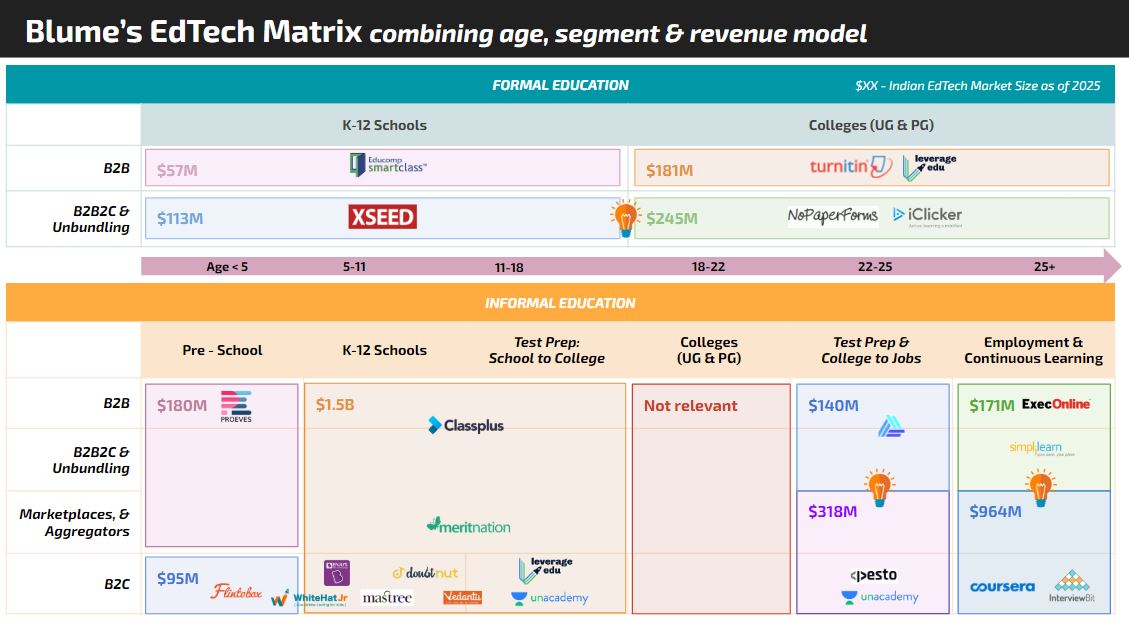Improving Mental Health has become one of the most talked about needs over the last 5 years, making therapy, self-help apps, group support, alt therapy big opportunity areas.
This #MentalHealthDay, @BlumeVentures looked at what opportunities this market holds for startups👇
This #MentalHealthDay, @BlumeVentures looked at what opportunities this market holds for startups👇
1/ Why is the demand growing?
1⃣COVID➡️spurt in anxiety, grief, loneliness, stress
2⃣Higher awareness, lower stigma💪
3⃣Later age pregnancies leading to more common developmental delays in kids
4⃣More nuclear families leading to breakdown of age old family support systems👩👦
1⃣COVID➡️spurt in anxiety, grief, loneliness, stress
2⃣Higher awareness, lower stigma💪
3⃣Later age pregnancies leading to more common developmental delays in kids
4⃣More nuclear families leading to breakdown of age old family support systems👩👦
2/ Mental Health covers a broad spectrum of needs, and not a singularly defined state.
Ranging from 'I want to work at maintaining my current state of mind' to 'I need intervention to solve for XYZ condition' with a wide range of needs in between.
Ranging from 'I want to work at maintaining my current state of mind' to 'I need intervention to solve for XYZ condition' with a wide range of needs in between.

3/ When you consider:
1) The wide range of needs & diff platforms / services that solve for them
2) The rapidly growing demand among individuals / employers
➡️The potential market size is quite large! With the biggest chunk sitting in therapy for adults between ages 20-50.
1) The wide range of needs & diff platforms / services that solve for them
2) The rapidly growing demand among individuals / employers
➡️The potential market size is quite large! With the biggest chunk sitting in therapy for adults between ages 20-50.

4/ But, the delivery of these services remains broken in 🇮🇳:
🙅♀️# of therapists / counsellors is far below the required # for our population size
🙅♀️Poor regulation of the space leads to poor quality of counsellors
🙅♀️Therapy is expensive and inaccessible for most people in India
🙅♀️# of therapists / counsellors is far below the required # for our population size
🙅♀️Poor regulation of the space leads to poor quality of counsellors
🙅♀️Therapy is expensive and inaccessible for most people in India
5/ There is also a fundamental contradiction here between efficacy, scalability, affordability.
Therapy (arguably the most effective) is very expensive & nearly impossible to scale at large. Support groups / AI bots are more affordable & scalable, but potentially less effective.
Therapy (arguably the most effective) is very expensive & nearly impossible to scale at large. Support groups / AI bots are more affordable & scalable, but potentially less effective.

6/ So, while the different ends of the Mental Health spectrum call for different forms of intervention / support (see chart below), the ideal solution is likely a hybrid of therapy (to achieve efficacy) and AI / tech / group support (to achieve scalability + affordability). 

7/ Based on our understanding of the space, we have broken down the landscape by:
✅NEED (maintenance to medical intervention)
✅DELIVERY MODEL (group / app / therapy)
Here's what we think the Indian startup landscape looks like, and what areas we are focusing on!
✅NEED (maintenance to medical intervention)
✅DELIVERY MODEL (group / app / therapy)
Here's what we think the Indian startup landscape looks like, and what areas we are focusing on!

8/ Within this, we're looking for players who:
✅Limit dependence on or CREATE therapist supply
✅Increase affordability and/or have global revenue
✅Mobile 1st with product nudges to maintain strong retention (to cater to millennials)
✅Help users track development/growth
✅Limit dependence on or CREATE therapist supply
✅Increase affordability and/or have global revenue
✅Mobile 1st with product nudges to maintain strong retention (to cater to millennials)
✅Help users track development/growth
Find our full report here: bit.ly/blume-mental-h…
We're always looking for feedback to sharpen our view. If you are building something that aligns with our view, or have data to help us change our thought process, please reach out!
@BlumeVentures @arpiit @BKartRed
FIN🙌
We're always looking for feedback to sharpen our view. If you are building something that aligns with our view, or have data to help us change our thought process, please reach out!
@BlumeVentures @arpiit @BKartRed
FIN🙌
• • •
Missing some Tweet in this thread? You can try to
force a refresh







